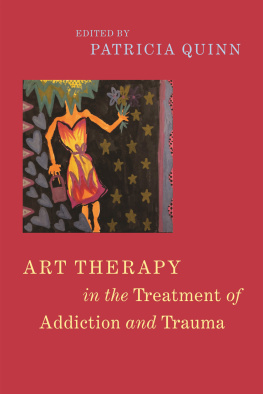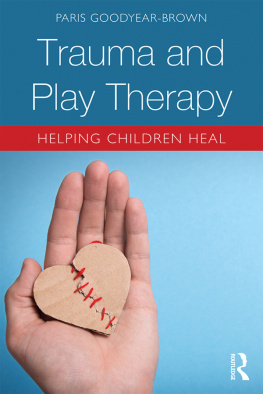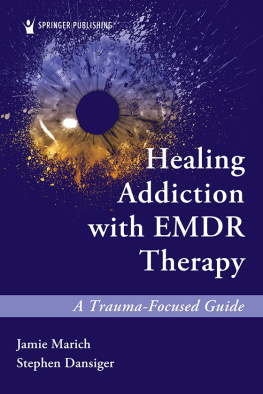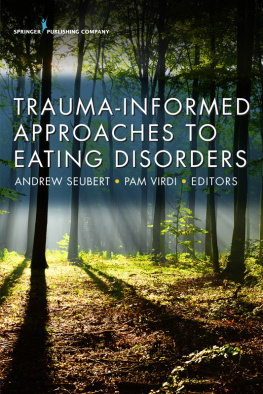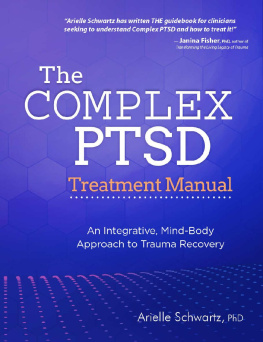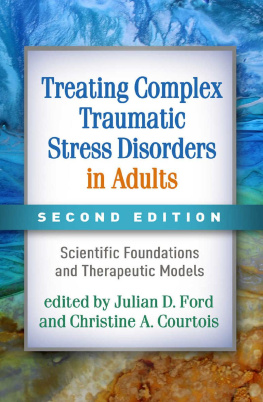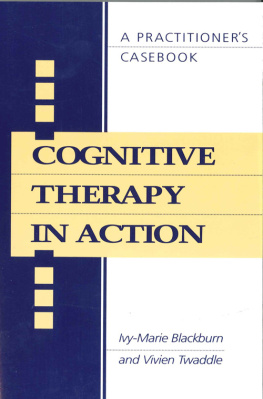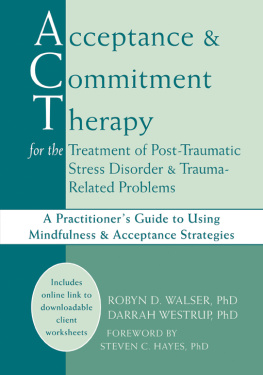Contents

ART THERAPY IN
THE TREATMENT
OF ADDICTION
AND TRAUMA
Edited by
PATRICIA QUINN

Contents
Introduction
This volume merges observations and research on different facets of addiction and trauma with art therapy and other approaches to psychotherapy. It was written for a broad audience: first, to prepare and inspire graduate art therapy students to enter a field where the benefits of art therapy are always apparent; second, with the hope that this book also finds an audience with professionals working in addictions; and, third, to reflect on the experience of working in this field as an art therapist, which was at times difficult, but always rewarding.
My experience in working with many thousands of people in treatment for substance misuse, and that of other expressive therapists who have seen how the sparks of creativity ignite motivation for change and health, suggests that art therapy can play an essential role in this profound healing process. It is my hope that art therapy will find a permanent place in addiction treatment, alongside medication-assisted therapy and cognitively based verbal therapies that may only partially address the needs of those who develop addiction after trauma and/or neglect. Art therapy interventions offer a reprieve from the neurological alteration and emotional change that can impede long-term recovery, by engaging the whole brain and body. The neurobiological intersection of addiction and art therapy is addressed throughout the book. However, describing the benefits of art therapy on the reward, mirror-neuron, somatosensory, motor, executive, and limbic brain systems of those with substance use disorders (SUDs) in detail deserves its own volume.
For those with trauma, art expedited revelations of seminal events while helping people to self-soothe. But there was something more at play in the widespread attraction to artliterally. Childhood art play was often lacking for many of those in treatment. And, for those who had art then, the sensory properties of materials stimulated childhood memories and interests. Exploration with art materials offered an experience of their intrinsic innocence. The meditative enteroception that art provided was useful for those with or without trauma.
In recent years there has been increasing acceptance that acute or cumulative trauma usually precedes the development of substance use disorders (Alexander, Hoke, Barrett, and Cumella 2020; Hein et al . 2010). The authors summarized a 2019 membership survey of the National Association of Alcohol and Drug Addiction Counselors (NAADAC) that preparedness to treat trauma, despite the majority of masters and doctoral degrees held by respondents was often lacking.
Increases in opiate and alcohol misuse are overwhelming treatment systems that are forced to change. Medication assisted therapies (MATs) that reduce cravings are helping to curb the rising death rate, and reducing criminal behaviors. However, reliance on MATs without therapy or counseling doesnt engage the clients own capacity for healing. In addition, the analgesic effect of MATs may offer an opportunity to do the deeper work to bring about lasting change. Peer support is being instituted as an additional stop gap to intercept the cycle of relapse, but it is not intended to replace treatment.
As case examples given in this book show, art therapy accesses depths where both adversity and sagacity lie. When applied therapeutically, art supports therapeutic and intrapsychic communication from which real recovery naturally follows. The extra-verbal, sensory properties of art help to put trauma and the feelings accompanying it into a meaningful context, which we know is needed to heal. Art therapy is an addiction treatment methodology that offers a holistic, accessible reprieve from the cognitive and emotional challenges imposed by substance reliance, increasing the likelihood of long-term recovery. For these reasons, art therapy has a place in addiction treatment alongside of MATs and other evidence-based therapies.
In Peggy Kolodny describes how she absorbed the work of pioneers in the fields of art therapy, neuroscience, and trauma treatment such as Perry, Porges, Siegel, van der Kolk and others, and integrated them in her clinical practice and trainings.
.
In , Linda Siegel merges Winnicotts object relations perspective with Jungian archetypal symbolism, as a clients progress in recovery was preserved in clay sculptures.
what art therapy for addiction and trauma on Rikers Islands mental health units is like. She describes how art therapy alone and with Dialectical Behavioral Therapy (DBT) can help people to process the traumatic events, while supporting positive interactions within and outside of the criminal justice setting.
Eileen McKee, an art therapist working for the US Department of Veterans Affairs (the largest healthcare sector in the US), in Palo Alto, California, writes in about the treatment for both SUDs and trauma with art therapy. The book concludes with offering art therapy for those who have been commercially sexually exploited (CSE). I wish to acknowledge help from Nicole Rainey who offered helpful insights and references from her work with survivors of trafficking.
References to SUDs refer to substance use disorder, or the ingestion of substances with psychoactive properties that are mood- or thought-altering. Alcohol is one of the most damaging and powerful drugs, and is included in the term drug unless specified otherwise. The terms addict and addiction occur as both verb and noun, as they describe the surrender to, or the causing of one to surrender to, a strong substance. Ironically, this is often an undeclared, hidden state, though the word comes from the Latin ad + dicere , to say, to assent ( Websters New World College Dictionary , 3rd Edition, 1996). SUD or addiction is a pattern of substance use that may alter ones lifestyle, lead to physical or mental harm, contribute to financial, legal, and/or social problems, and bring progressive difficulty in meeting responsibilities for oneself, ones work, or ones family. This may manifest with regularity or intermittently, and may include changes in tolerance, withdrawal symptoms, using more substance than intended, failures to cut down or quit, or a preoccupation with substances while other interests decline.
The tentacles of addiction reach into every aspect of the lives of the unique individuals it touches. As they say in AA (Alcoholics Anonymous), This disease doesnt discriminate! Whether people come from disadvantage or privilege, when addiction takes hold it will form a detour in the life path. Treatment that is attentive and empathetic to the clients own values can help them to discover their true purpose, which contributes to a reason to recover. Most people value creativity, but feel alienated from it. Participating with the arts brings this estimable trait forward and suggests there may be other unknown facets to discover in oneself.
The relationship that occurs in helping people to reveal their innermost selves is central to what happens in art therapy. Using a range of targeted psychodynamic approaches also helps to match the emotional, sensory, cognitive, and social needs of those with addiction with and without trauma. In this way, whether capping markers, recycling clay, or connecting the client to their lifes purpose, art therapists serve as part of the treatment team to help people reinvest in their lives.

